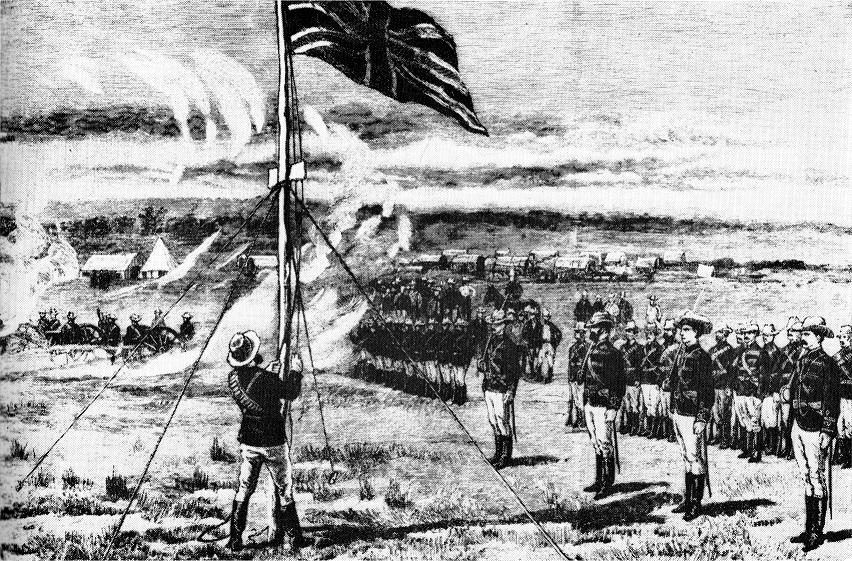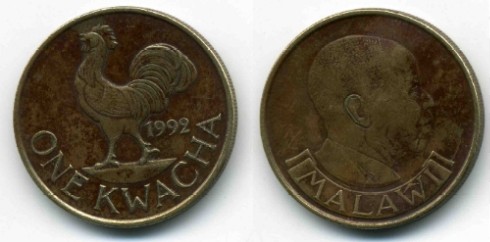|
Malawi Airlines
Malawi Airlines (''Malawian Airlines'' until 2016) is the flag carrier airline of Malawi, based in Lilongwe and with its hub at Lilongwe International Airport. It was established in 2012 after the liquidation of Air Malawi, the former national airline. Ethiopian Airlines operates it under a management contract and owns 49% of the airline after it emerged as the winner following competitive bidding. On 25 March 2021, the Board of Directors of the company passed a resolution recommending the "orderly winding up of the company" due to heavy debts and technical insolvency. However, on 5 May 2021 the Government of Malawi confirmed that it intended to recapitalise the airline instead. In 2022, the airline announced its first annual profit of MWK 4 billion (USD 4.0 million). History The airline was formed in , following the collapse of Air Malawi, the hitherto national carrier, in February 2013, as a result of the inability to pay its debts. A deal with Ethiopian Airlines, that wo ... [...More Info...] [...Related Items...] OR: [Wikipedia] [Google] [Baidu] |
Kamuzu International Airport
Kamuzu International Airport is an international airport serving Lilongwe, the capital city of Malawi. It is also known as Lilongwe International Airport. History The airport was built in 1977 by the Nello L. Teer Company, taking over most airline operations from Old Lilongwe Airport (FWLE) some 6 km west of the city centre. Owned by Airport Developments Limited. Its ICAO code was originally FWLI. In the 1990s, Lilongwe had scheduled passenger service to Europe. British Airways and KLM offered one-stop flights to London and Amsterdam, respectively. Facilities The airport is at an elevation of above mean sea level. It has one runway designated 14/32 with an asphalt surface measuring . Airlines and destinations Passenger Cargo References External links * * {{authority control Airports in Malawi Airport An airport is an aerodrome with extended facilities, mostly for commercial air transport. Airports usually consists of a landing area ... [...More Info...] [...Related Items...] OR: [Wikipedia] [Google] [Baidu] |
Harare
Harare (; formerly Salisbury ) is the capital and most populous city of Zimbabwe. The city proper has an area of 940 km2 (371 mi2) and a population of 2.12 million in the 2012 census and an estimated 3.12 million in its metropolitan area in 2019. Situated in north-eastern Zimbabwe in the country's Mashonaland region, Harare is a metropolitan province, which also incorporates the municipalities of Chitungwiza and Epworth. The city sits on a plateau at an elevation of above sea level and its climate falls into the subtropical highland category. The city was founded in 1890 by the Pioneer Column, a small military force of the British South Africa Company, and named Fort Salisbury after the UK Prime Minister Lord Salisbury. Company administrators demarcated the city and ran it until Southern Rhodesia achieved responsible government in 1923. Salisbury was thereafter the seat of the Southern Rhodesian (later Rhodesian) government and, between 1953 and 1963, th ... [...More Info...] [...Related Items...] OR: [Wikipedia] [Google] [Baidu] |
Tanzania
Tanzania (; ), officially the United Republic of Tanzania ( sw, Jamhuri ya Muungano wa Tanzania), is a country in East Africa within the African Great Lakes region. It borders Uganda to the north; Kenya to the northeast; Comoro Islands and the Indian Ocean to the east; Mozambique and Malawi to the south; Zambia to the southwest; and Rwanda, Burundi, and the Democratic Republic of the Congo to the west. Mount Kilimanjaro, Africa's highest mountain, is in northeastern Tanzania. According to the United Nations, Tanzania has a population of million, making it the most populous country located entirely south of the equator. Many important hominid fossils have been found in Tanzania, such as 6-million-year-old Pliocene hominid fossils. The genus Australopithecus ranged across Africa between 4 and 2 million years ago, and the oldest remains of the genus ''Homo'' are found near Lake Olduvai. Following the rise of '' Homo erectus'' 1.8 million years ago, humanity spread ... [...More Info...] [...Related Items...] OR: [Wikipedia] [Google] [Baidu] |
South Africa
South Africa, officially the Republic of South Africa (RSA), is the southernmost country in Africa. It is bounded to the south by of coastline that stretch along the South Atlantic and Indian Oceans; to the north by the neighbouring countries of Namibia, Botswana, and Zimbabwe; and to the east and northeast by Mozambique and Eswatini. It also completely enclaves the country Lesotho. It is the southernmost country on the mainland of the Old World, and the second-most populous country located entirely south of the equator, after Tanzania. South Africa is a biodiversity hotspot, with unique biomes, plant and animal life. With over 60 million people, the country is the world's 24th-most populous nation and covers an area of . South Africa has three capital cities, with the executive, judicial and legislative branches of government based in Pretoria, Bloemfontein, and Cape Town respectively. The largest city is Johannesburg. About 80% of the population are Black South Afri ... [...More Info...] [...Related Items...] OR: [Wikipedia] [Google] [Baidu] |
Airline Hub
An airline hub or hub airport is an airport used by one or more airlines to concentrate passenger traffic and flight operations. Hubs serve as transfer (or stop-over) points to help get passengers to their final destination. It is part of the hub-and-spoke system. An airline may operate flights from several non-hub (spoke) cities to the hub airport, and passengers traveling between spoke cities connect through the hub. This paradigm creates economies of scale that allow an airline to serve (via an intermediate connection) city-pairs that could otherwise not be economically served on a non-stop basis. This system contrasts with the point-to-point model, in which there are no hubs and nonstop flights are instead offered between spoke cities. Hub airports also serve origin and destination (O&D) traffic. Operations The hub-and-spoke system allows an airline to serve fewer routes, so fewer aircraft are needed. The system also increases passenger loads; a flight from a hub to a s ... [...More Info...] [...Related Items...] OR: [Wikipedia] [Google] [Baidu] |
Jomo Kenyatta International Airport
Jomo Kenyatta International Airport , is an international airport in Nairobi, the capital of and largest city in Kenya. The other three important international airports in Kenya include the Kisumu International Airport, Moi International Airport and Eldoret International Airport. JKIA is located in the Embakasi suburb southeast of Nairobi's central business district, the airport has scheduled flights to destinations in over 50 countries. Originally named Embakasi Airport, the airport's name was changed in 1978 to honor Jomo Kenyatta, Kenya's first president and prime minister. The airport served over 7 million passengers in 2016, making it the seventh busiest airport in passenger traffic on the continent. History 1950s and 1960s Discussions about building the airport date back to 1945. At that time, the colonial power—Britain—and its national airline, BOAC, were worried that the existing airport at Eastleigh was inadequate for post-War civilian airliners. The costs of ... [...More Info...] [...Related Items...] OR: [Wikipedia] [Google] [Baidu] |
Nairobi
Nairobi ( ) is the capital and largest city of Kenya. The name is derived from the Maasai phrase ''Enkare Nairobi'', which translates to "place of cool waters", a reference to the Nairobi River which flows through the city. The city proper had a population of 4,397,073 in the 2019 census, while the metropolitan area has a projected population in 2022 of 10.8 million. The city is commonly referred to as the Green City in the Sun. Nairobi was founded in 1899 by colonial authorities in British East Africa, as a rail depot on the Uganda - Kenya Railway.Roger S. Greenway, Timothy M. Monsma, ''Cities: missions' new frontier'', (Baker Book House: 1989), p.163. The town quickly grew to replace Mombasa as the capital of Kenya in 1907. After independence in 1963, Nairobi became the capital of the Republic of Kenya. During Kenya's colonial period, the city became a centre for the colony's coffee, tea and sisal industry. The city lies in the south central part of Kenya, at an elevation ... [...More Info...] [...Related Items...] OR: [Wikipedia] [Google] [Baidu] |
Kenya
) , national_anthem = "Ee Mungu Nguvu Yetu"() , image_map = , map_caption = , image_map2 = , capital = Nairobi , coordinates = , largest_city = Nairobi , official_languages = Constitution (2009) Art. 7 ational, official and other languages"(1) The national language of the Republic is Swahili. (2) The official languages of the Republic are Swahili and English. (3) The State shall–-–- (a) promote and protect the diversity of language of the people of Kenya; and (b) promote the development and use of indigenous languages, Kenyan Sign language, Braille and other communication formats and technologies accessible to persons with disabilities." , languages_type = National language , languages = Swahili , ethnic_groups = , ethnic_groups_year = 2019 census , religion = , religion_year = 2019 census , demonym = ... [...More Info...] [...Related Items...] OR: [Wikipedia] [Google] [Baidu] |
Malawian Kwacha
The kwacha (; ISO 4217: MWK, official name Malawi Kwacha) is the currency of Malawi as of 1971, replacing the Malawian pound. It is divided into 100 tambala. The kwacha replaced other types of currency, namely the British pound sterling, the South African rand, and the Rhodesian dollar, that had previously circulated through the Malawian economy. The exchange rate of the kwacha undergoes fixed periodical adjustments, but since 1994 the exchange rate has floated. In 2005, administrative measures were put in place by Bingu wa Mutharika to peg the exchange rate with other currencies. Banknotes are issued by the Reserve Bank of Malawi. In May 2012, the Reserve Bank of Malawi devalued the kwacha by 34% and unpegged it from the United States dollar. Etymology The name ''kwacha'' was first used in Zambia, where the Zambian kwacha was introduced in 1968. It derives from the Chinyanja or Chichewa word meaning "it has dawned", while ''tambala'' translates as "rooster" in Chichewa. Th ... [...More Info...] [...Related Items...] OR: [Wikipedia] [Google] [Baidu] |
Malawian Airlines Boeing 737-800 (ET-APL) At OR Tambo International Airport
This article is about the demographic features of the population of Malawi, including population density, ethnicity, education level, health of the populace, economic status, religious affiliations and other aspects of the population. Malawi derives its name from the Maravi, a Bantu people who came from the southern Congo about 600 years ago. On reaching the area north of Lake Malawi, the Maravi divided. One branch, the ancestors of the present-day Chewas, moved south to the west bank of the lake. The other, the ancestors of the Nyanjas, moved down the east bank to the southern part of the country. By AD 1500, the two divisions of the tribe had established a kingdom stretching from north of the present-day city of Nkhotakota to the Zambezi River in the south, and from Lake Malawi in the east, to the Luangwa River in Zambia in the west. Migrations and tribal conflicts precluded the formation of a cohesive Malawian society until the turn of the 20th century. In more recent years, ... [...More Info...] [...Related Items...] OR: [Wikipedia] [Google] [Baidu] |
Public–private Partnership
A public–private partnership (PPP, 3P, or P3) is a long-term arrangement between a government and private sector institutions.Hodge, G. A and Greve, C. (2007), Public–Private Partnerships: An International Performance Review, Public Administration Review, 2007, Vol. 67(3), pp. 545–558 Typically, it involves private capital financing government projects and services up-front, and then drawing revenues from taxpayers and/or users over the course of the PPP contract. Public–private partnerships have been implemented in multiple countries and are primarily used for infrastructure projects. They have been employed for building, equipping, operating and maintaining schools, hospitals, transport systems, and water and sewerage systems. Cooperation between private actors, corporations and governments has existed since the inception of sovereign states, notably for the purpose of tax collection and colonization. However, contemporary "public-private partnerships" came into being ... [...More Info...] [...Related Items...] OR: [Wikipedia] [Google] [Baidu] |






